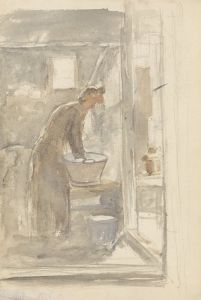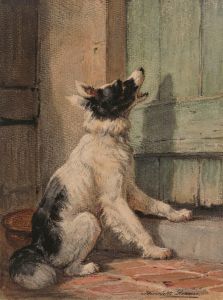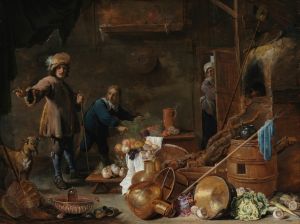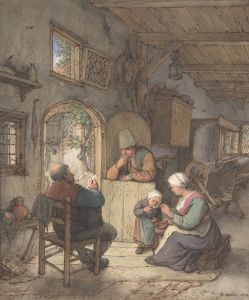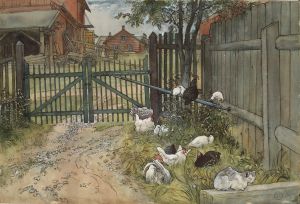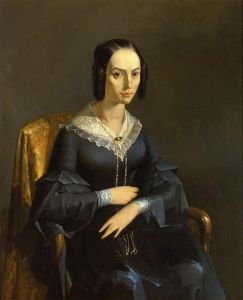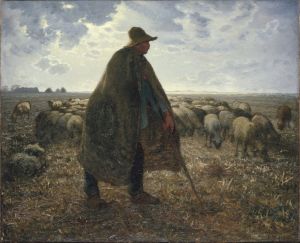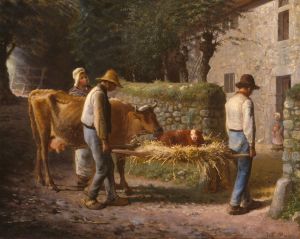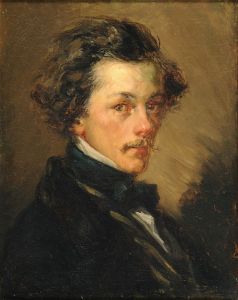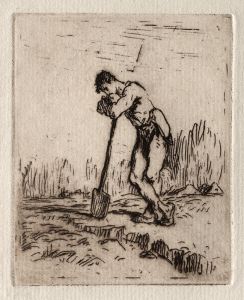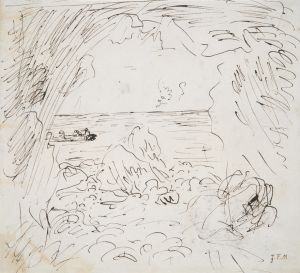
The Old Home at Barbizon
A hand-painted replica of Jean-François Millet’s masterpiece The Old Home at Barbizon, meticulously crafted by professional artists to capture the true essence of the original. Each piece is created with museum-quality canvas and rare mineral pigments, carefully painted by experienced artists with delicate brushstrokes and rich, layered colors to perfectly recreate the texture of the original artwork. Unlike machine-printed reproductions, this hand-painted version brings the painting to life, infused with the artist’s emotions and skill in every stroke. Whether for personal collection or home decoration, it instantly elevates the artistic atmosphere of any space.
Jean-François Millet, a prominent French painter and one of the founders of the Barbizon School, is renowned for his depictions of rural life and landscapes. However, specific information about a painting titled "The Old Home at Barbizon" by Millet is not readily available in historical records or major art collections. Millet's works often focused on the everyday lives of peasants and the natural environment surrounding them, reflecting his deep connection to the rural settings of France.
Millet was born on October 4, 1814, in Gruchy, a hamlet in the Normandy region of France. He was raised in a farming family, which profoundly influenced his artistic focus on agrarian themes. In 1849, Millet moved to Barbizon, a village near the Forest of Fontainebleau, where he became a central figure in the Barbizon School. This group of artists sought to break away from the conventions of academic painting, emphasizing naturalism and painting en plein air (outdoors) to capture the changing qualities of light and atmosphere.
The Barbizon School was named after the village of Barbizon, where Millet and other artists, such as Théodore Rousseau and Charles-François Daubigny, gathered to paint the surrounding landscape. This movement was a precursor to Impressionism, as it emphasized direct observation of nature and a more realistic portrayal of rural life. Millet's work often depicted scenes of peasant labor, such as sowing, harvesting, and shepherding, which were imbued with a sense of dignity and respect for the hard work of rural communities.
Millet's most famous works include "The Gleaners" (1857) and "The Angelus" (1857-1859), both of which exemplify his focus on the lives of peasants and the rural landscape. These paintings are characterized by their earthy color palette, attention to detail, and the emotional depth with which Millet portrayed his subjects. His work had a significant influence on later artists, including Vincent van Gogh, who admired Millet's ability to convey the nobility of rural life.
While "The Old Home at Barbizon" is not a widely recognized or documented work by Millet, it is possible that it could refer to a lesser-known piece or a specific location that held personal significance for the artist. Barbizon itself was an important place for Millet, as it provided the inspiration and setting for many of his paintings. The village and its surrounding landscape offered a tranquil environment where Millet could explore his artistic vision and develop his distinctive style.
In summary, while there is no specific information available about a painting titled "The Old Home at Barbizon" by Jean-François Millet, his legacy as a key figure in the Barbizon School and his contributions to the depiction of rural life remain significant in the history of art. His works continue to be celebrated for their realism, emotional depth, and the respect they convey for the lives of ordinary people.





